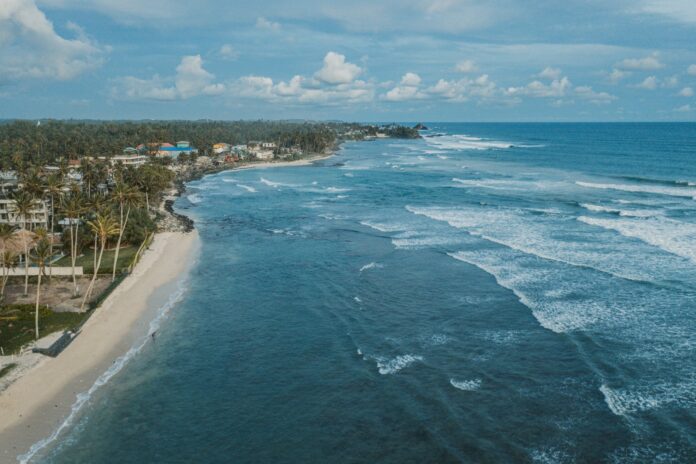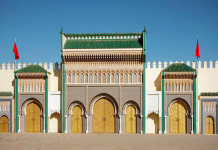Sri Lanka is currently experiencing its worst economic crisis since independence in 1948, which has triggered shortages of fuel and food across the island. It is a blow for a nation that, after civil war and nearly three years after the Easter terrorist bombings and two of the pandemic, looked like it was seeing the shoots of recovery in its pivotal tourism industry – its fifth largest source of foreign revenue.
Madubhani Perera, marketing director at Sri Lanka Tourism, says that at the beginning of this year, the target was for 1.2 million tourist arrivals, with $2bn (£1.53bn) foreign exchange earnings. This would still be a 50 per cent reduction on the peak 2018 figures but a significant leap from the previous two years when tourism was largely shut down due to the pandemic.
Hasitha Gamage is a tour guide at Gradely Estate, a cinnamon farm that works to support small farmers, close to the Unesco World Heritage Site of Galle Fort. He explains that bookings had begun to roll in as travel restrictions began to ease around the world: “From last November, we were really busy. We had visitors from many countries, especially England, Germany, Spain and Sweden. It was a great help.”
However, they are now seeing more cancellations as tourists worry about Sri Lanka’s financial crisis and the resulting lack of fuel. “Many tours have been cancelled,” says Gamage, “And I know many tour guides who are now facing a big problem.”
The Unesco world heritage site of Galle (Photo: Tuul & Bruno Morandi/Getty)
Since March this year, the Sri Lankan rupee has plummeted against the US dollar. It is now the world’s worst-performing currency, lagging behind even the Russian ruble. The International Monetary Fund (IMF) also warned last month that the country is facing multiple challenges, including unsustainable debt levels, low currency reserves and double-figure inflation.
The spiralling financial crisis is being felt across the island’s population of 22 million. Without the reserves to pay for imports, there are shortages of fuel, electricity, food and medicines. Power cuts are now a daily occurrence. For those without generators or the diesel to power them, it can mean whole days without electricity. In the capital, Colombo, mile-long queues snake out from grocery stores and petrol stations, with many Sri Lankans now sleeping in their cars as they queue in the hope of being able to fill up their tank with diesel in the morning.
Once at the front of the queue, they find that prices have soared. Food inflation in March reached 30.2 per cent, a record high. Overall inflation hovers at around 18 per cent. Danushka is the manager of a boutique hotel in Weligama on Sri Lanka’s south coast, a small town that, pre-Covid, buzzed with international visitors, drawn by the surf schools, beachfront cafes and rooftop bars.
Fishermen’s boats on the sandy beach at Weligama. It buzzed with tourists pre-Covid (Photo: Daniele Carotenuto/Getty)
In spite of the recent increase in tourist arrivals, he explains that many local people are still struggling. This is especially because dhal – a Sri Lankan food staple – has more than doubled in price over the last three months: “Ordinary people used to get three meals a day, but now they get only one or maybe two. All the prices have increased. It’s very difficult.” Danushka says he’s concerned the food crisis will deepen, and many of the poorest will face starvation. Nearly everyone I speak to echoes this dire warning.
It’s tempting to see Sri Lanka’s current crisis solely through the lens of the pandemic. In a nation where tourism contributed 12.6 per cent to the country’s GDP in 2019, the eight-month border closure in 2020 was disastrous for workers who depended on visitors. In 2021, continuing lockdowns and global travel restrictions meant tourist numbers were still down 92 per cent on their peak-2018 levels. Covid also had a substantial impact on the country’s large apparel industry.
However, Dhananath Fernando, chief operating officer of the independent public policy think tank Advocata Institute, believes the pandemic accelerated the economic crisis rather than caused it. Instead, he points to years of disastrous events and political mismanagement, including draughts, bond scandals, a constitutional coup, and the Easter bombings. “We had multiple shocks, back-to-back,” he says.
Fernando explains that the current government’s policies on taxation, money printing and public policy decisions, both before and during the pandemic, moved an already precarious situation to crisis point.
The war in Ukraine has also contributed to the dire situation in Sri Lanka, not only because it has fed into the increasing cost of fuel and food, but also because Russia and Ukraine were both significant and resilient tourist markets.
When Sri Lanka’s borders reopened at the end of 2020, Ukrainians were among the first tourist groups to return to the island. In February 2022, Russians made up the largest share of visitors (15.9 per cent, compared to 11 per cent from the UK). Since the beginning of April, there have been a series of largely peaceful but growing protests – largely in the capital – calling for the resignation of the president, Gotabaya Rajapaksa.
Rajapaksa – who has been accused of committing war crimes while part of the government during the country’s civil war – came to power following the Easter bombings with a nationalist agenda and the promise of increased security. With many people now feeling their lives are more precarious than ever, there’s sustained pressure for him to step aside.
Keen to protect the sector, the Sri Lankan Ministry of Tourism is reassuring prospective visitors that they are prioritising the uninterrupted supply of fuel and power to tour guides and hotels and have introduced a system of priority passes. Henry Fitch, CEO of Teardrop Hotels, one of Sri Lanka’s leading boutique hotel and restaurant groups, says the system is currently working.
“Each of our hotels and tea bungalows is equipped with generators and are well-stocked with fuel and cooking gas,” he says. “The government is taking steps to support the hospitality industry. We haven’t had any problems sourcing food.”
Fitch says that the shortage of diesel means some taxi drivers can take longer to refuel their vehicles. That said, petrol is still available, which means local transport can continue to operate. It is the small-medium enterprises, such as local restaurants without generators that find the power cuts most challenging.
This tallies with the experience of Ingrid Heidel, who is currently touring the temple-strewn ancient cities to the north, with plans to visit Sri Lanka’s hill country and coast before returning to the UK. She says that although she’s aware of the huge impact of the crisis on Sri Lankans, so far her itinerary hasn’t been affected. “We were a bit worried before coming,” she says, “but once we arrived that completely changed. Sri Lankans have been so welcoming and friendly.”
Melissa Innocenti has just arrived back in the UK following an eight-day tour around the island. Her guide’s car was stopped at police roadblocks, and she did see some peaceful anti-government protests, but she didn’t have safety concerns. Some of the smaller hotels she stayed in, without generators, did experience power cuts. “It was normally between 6-8pm, so we would charge our phones before and ask for candles.”
She says: “Sri Lanka is an amazing place. Maybe the situation can be tricky if you’re travelling with kids or have specific needs, but for us – three people in their thirties – it was absolutely fine.” Nizar feels confident that having seen the tourist sector recover after other setbacks, it will be able to do so again. “Sri Lankans are a resilient people,” the guide says.
The streets of Weligama. ‘Sri Lankans are a resilient people,’ says guide Nizar (Photo by: VW PICS/Universal Images Group via Getty)
He hopes that the government will now take the opportunity to refresh its traditional approach to tourism – which is heavily focused on international brands and organised tours – and embrace the smaller guesthouses and independent businesses. He says: “If everything is all-inclusive, there is not much trickle-down effect to the community.”
Nizar points to his palm-tree fringed town of Ahangama on the south coast as an example: “It’s well known all over the world for surfing, but the tourism board ignores it because there is no five-star resort here.”
Henry Finch also agrees that solid community links are key to tourism’s revival and sustainability. Teardrop Hotels has retained all its workforce since the beginning of the pandemic: “By staying in small hotels that are part of their community and actively working with local people to host the experiences on offer, tourists can have a positive impact.”
Despite the current crisis, Sri Lanka Tourism says it has not revised its targets: “Tourism is the only industry that can give a boost to our economy.”
Hasitha Gamage also hopes that, by planning carefully with hotels and tour guides, tourists will feel confident to return, and when they come, they will spend money to support the community. “It matters that money is spread out,” he says, “from the people who are selling the king coconut up to the big hotels.”













